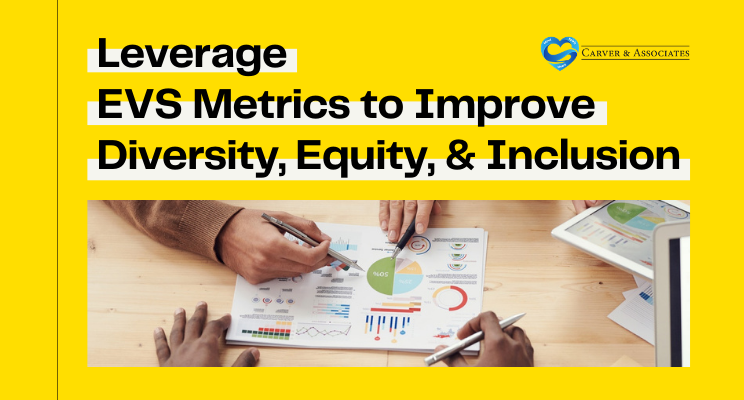In one of Deloitte’s Reviews, research revealed that organizations with inclusive cultures are:
- 3x more likely to be high-performing
- 8x more likely to achieve better outcomes
- 2x more likely to meet or exceed financial targets
So exactly how does your organization take the next step in creating an inclusive culture?
Perceptions, Not Assumptions
Inclusive cultures are developed from your employees’ PERCEPTIONS.
At the start of your DEI initiative, assess your culture with an employee viewpoint survey (EVS). This will help you fully understand your employees’ experiences, points of view, and observations of working at your organization as it relates to diversity, equity, and inclusion.
According to a 2017 Human Capital Survey, approximately 32% of all respondents expressed their organization does not bother to measure diversity and inclusion in recruiting efforts.
Diversity leaders within organizations should support upper management in the implementation of an employee viewpoint survey. Ask the CEO or president to create a video to encourage participation. Specifically highlighting the result the organization wants to achieve and how their employees’ input from taking the survey will help. When people understand the why, what, and how of the effort, they will often do more.
How to Measure DEI within the Entire Organization
In measuring diversity, begin with capturing the rate at which your organization hires and employs people. Gather your employees’ demographics and viewpoints.
- A few examples of demographics would include gender identity, racial or ethnic groups, and disability status.
- Regarding viewpoints, examples are levels of satisfaction with the climate/environment, sense of belonging, and how their opinion is valued.
In measuring inclusion, focus on metrics that highlight hiring, promotions, and permanent separations and explore the percentages for different demographics. Such as:
- The percentage of employees with a disability that received promotions
- The percentage of race or ethnicities that were hired and separated
In measuring equity, leaders can close equity gaps by capturing job quality while also uncovering problems that disproportionately affect employees from certain demographics (e.g. veteran status, levels of education, age, etc.)
- To gather data on job quality, you can identify if your employees are being paid the industry median wage for their role.
- To identify a problem that may disproportionately affect certain employees, you may want to track if there are inequities in your hiring practices. For example, a study covered in the Harvard Business Review discovered that low-quality “white” resumes received more callbacks than high-quality “black” resumes.
If there are different offices or departments, you may want to identify employee viewpoints within each segment as well as the aggregate data for the entire organization. You may end up discovering that different segments have their own unique gaps, challenges, and themes and may require different approaches in improving your diversity, equity, and inclusion practices.
Analyze and Contextualize the Data
In your data analysis, identify gaps, key themes, and challenges to serve as a roadmap to ensure your organization is making progress in strategy, talent development, performance management, recruitment, and other related areas.
Clarify which leaders in management will own the responsibility of monitoring diversity, equity, and inclusion metrics to ensure the organization is making steps towards its intended outcomes.
Monitor Your Leader’s and Board’s DEI Practices
Overall, leaders and board members should lead by example by holding themselves accountable through continuous evaluation of their own behaviors and practices as it relates to DEI. Evaluate behaviors against traits that encourage inclusive leadership.
Deloitte highlights six critical traits that will support leaders in helping their organizations thrive in a rapidly changing world. They are cognizance, curiosity, cultural intelligence, collaboration, commitment, and courage.
Conduct an assessment as it relates to your leaders’ and board members’ abilities to leverage these qualities. If the organization’s key objectives and results are not being met, your leaders and board members may have the opportunity to improve their skill sets and capacity to support your DEI goals.
Key Questions to Ask Leadership
Diversity leaders within organizations should ask upper management and board members key questions about their measurement practices. To begin the conversation, consider asking:
- What metrics are in place to measure the gaps and effectiveness of the organization’s diversity, equity, and inclusion efforts?
- How does the organization leverage these metrics to drive continuous improvement of its own diversity, equity, and inclusive policies and practices?
Peter Drucker said it best, “If you don’t measure it, you can’t improve it.”
Ty Miller is a Leadership Strategy Consultant at Carver & Associates. He Helps Leaders Cast A Vision, Align Their Teams To It, And Drive Execution Of That Vision.
Connect with Ty on LinkedIn here: https://www.linkedin.com/in/tymillerco/

